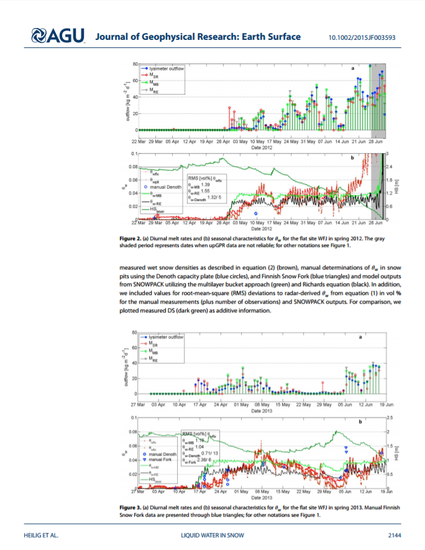
Evaluating and improving snow models and outflow predictions for hydrological applications is hindered by the lack of continuous data on bulk volumetric liquid water content (��w) and storage capacity of the melting snowpack. The combination of upward looking ground-penetrating radar and conventional snow height sensors enable continuous, nondestructive determinations of ��w in natural snow covers from first surficial wetting until shortly before melt out. We analyze diurnal and seasonal cycles of ��w for 4 years in a flat study site and for three melt seasons on slopes and evaluate model simulations for two different water transport schemes in the snow cover model SNOWPACK. Observed maximum increases in ��w during a day are below 1.7 vol % (90th percentile) at the flat site. Concerning seasonal characteristics of ��w, less than 10% of recorded data exceed 5 vol % at the flat site and 3.5 vol % at slopes. Both water transport schemes in SNOWPACK underestimate maximum ��w at the flat site systematically for all observed melt seasons, while simulated ��w maxima on slopes are accurate. Implementing observed changes in ��w per day in outflow predictions increases model performance toward higher agreement with lysimeter measurements. Hence, continuously monitoring ��w improves our understanding of liquid water percolation and retention in snow, which is highly relevant for several aspects of the cryosphere such as avalanche formation, catchment hydrology, and ice sheet mass balances.
This document was originally published by Wiley on behalf of the American Geophysical Union in the Journal of Geophysical Research: Earth Surface. Copyright restrictions may apply. doi: 10.1002/2015JF003593.
Available at: http://works.bepress.com/hanspeter_marshall/27/
